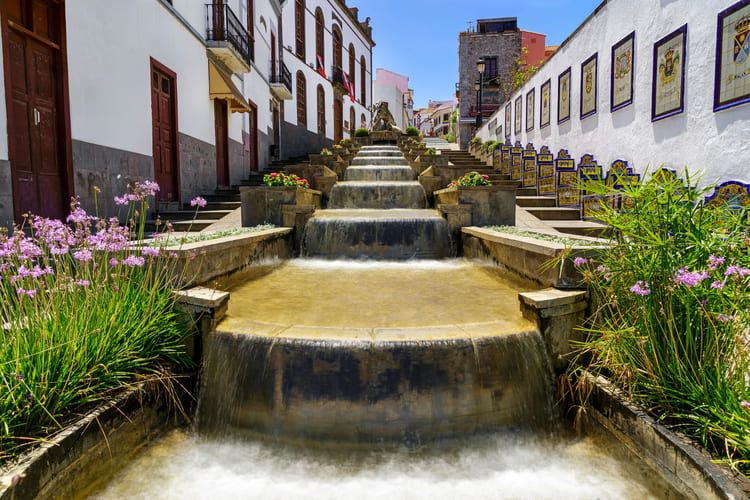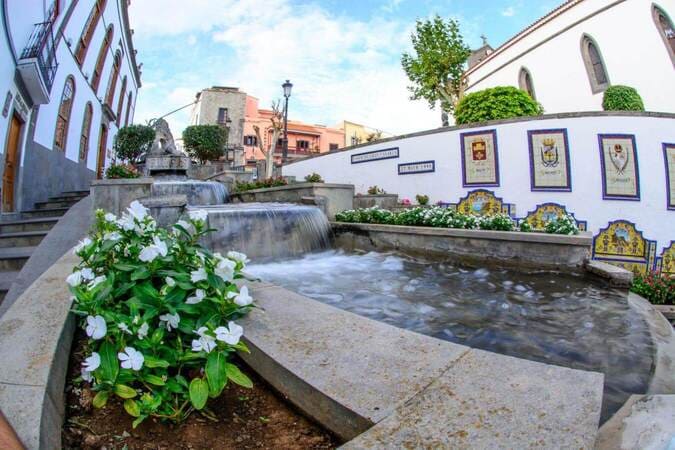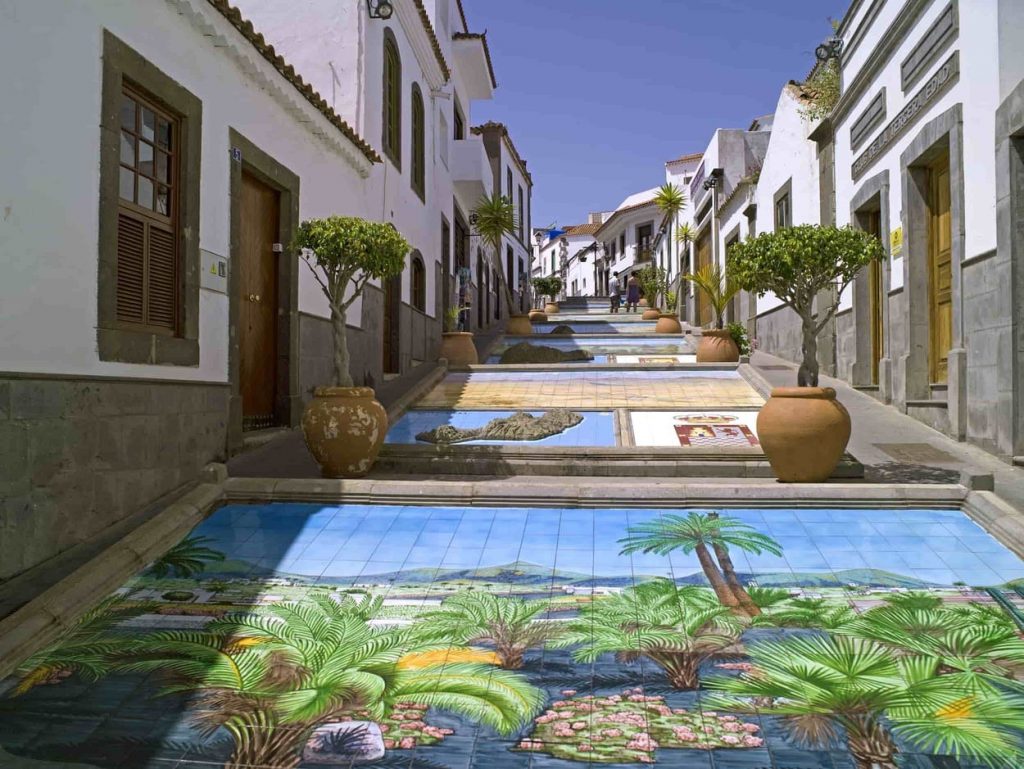Firgas is, for many people who know it, the most beautiful village of Gran Canaria. This small town has water as its main protagonist, but it is not located on the coast. The traditional uses of water, as well as its ethnographic and architectural richness, have turned this town into a corner that attracts more and more eyes. Stay with us to discover what to see in Firgas.
Where Firgas is located
Firgas, in Gran Canaria, is located in the north of the island, about 22 kilometers from Las Palmas. As we pointed out, it is a municipality that has no coastline and is located about 465 meters above sea level. The town itself is about 30 kilometers by car from the capital.
If you do not know how to get to Firgas, although the journey from Las Palmas is very comfortable taking the GC-2 or GC-3 roads, you can also get there by bus, through the line 204 that departs from the capital.

The Villa de Firgas also has as nearby attractions the municipality of Arucas, which is about 15 minutes by car from the historic center, and the beaches of El Puertillo and Los Charcones, which require a walk, also by car, of about 20 minutes.
Why it is known as the Water Village
This municipality has water as the main protagonist, in fact, it receives the nickname of Villa del Agua for its curious artificial waterfall, the Paseo de Gran Canaria. Along with it, it also highlights its mill and the large number of wells, ponds, springs and corner pieces that you can find walking through the village.
The mill, commonly known as Molino del Conde or Molino de Firgas, was built in the 16th century and in 2007 it was declared an Asset of Cultural Interest. Its most remarkable aspect is that it is still in operation and it is one of the oldest installations of this type in the archipelago.
Today it no longer has an agricultural use as in its beginnings, but it is the seat of a museum where visitors are shown how to obtain gofio from ground millet. Gofio is one of the most emblematic foods in the Canary Islands.
The nickname of Villa del Agua comes to Firgas because of its direct link with the hydraulic exploitation. In fact, the mill is a historically very important part of this municipality, since it allowed to generate a productive industry from the use of millet.
Agua Firgas and the Aguaviva Festival
Firgas' relationship with water is also evident in the Firgas water itself , one of the best known in the Canary Islands. Even some English romantic travelers went so far as to say that it is the most effervescent and pleasant mineral water they had ever drunk. This town and the nearby areas are surrounded by springs of excellent quality. And to this is added a place of great scenic beauty.

The Firgas Town Hall, aware of the tourist potential offered by the municipality, has been organizing the Aguaviva Festival since 2021. The first edition consisted of an urban art event that transformed the streets of the town into a mural, so that contemporary artists turned that space into a colorful party in tribute to the environment, water and music.
Still today, if we walk through the streets, we can contemplate these murals. In the last edition of the festival, held in April, the central theme was music, but there was also space for children's workshops, family games, parades and the presence of food trucks and craft stalls.
What to see in Firgas
Now that we know more about this municipality and its links with water, it is time to focus on what is important, what you can do in Firgas. One of the most visited spots in the village is the Paseo de Gran Canaria. It is a 30-meter long waterfall fountain that you can walk parallel to it through a pedestrian walkway.
On the side of this passage there are 22 benches built with Andalusian tiles representing all the municipalities of the island with typical images. The waterfall represents the water wealth and importance of water in the whole region and is topped with a monument with the name of the village.
The second great place to visit is the Molino del Conde, which is currently a museum and consists of several buildings. Very close to this place is located the Plaza de la Vaca, with the monument to the Cattleman.

Returning to the Paseo de Gran Canaria, at the end of it is the building of the Casa de la Cultura de Firgas, and on the opposite side, the Plaza de San Roque, where the main buildings of power are located: the Church of San Roque and the Town Hall of Firgas.
Another place of interest is the Antigua Acequia Rural. To finish this area of the village, from the Mirador del Atlántico you will be able to observe one of the most beautiful views of the north of Gran Canaria. At this point, if the day is clear, you can see the neighboring islands of Tenerife and Fuerteventura.
Firgas, the Villa del Agua, is a municipality that invites to be visited. Far from the hustle and bustle of coastal tourist towns, this inland corner in the north of the island is a haven of peace that has in water its main hallmark. Would you like to know it?
The Canary Islands is a land with a thousand things to see, explore and learn about. If you are interested in learning more interesting facts about the Canary Islands, here is a link to the Explora Canarias section of Marca Canaria.
Paula Vera.
Photos: holaislascanarias.com, Cabildo de Gran Canaria.



